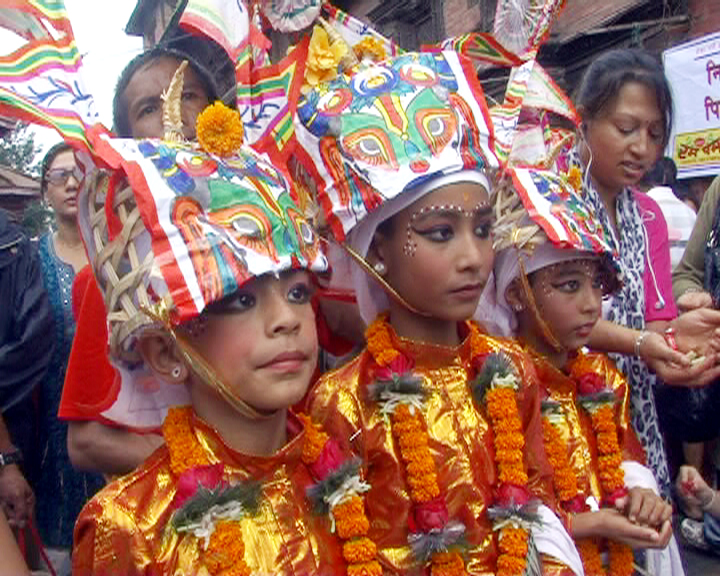The historic city of Bhaktapur has officially commenced its annual Gai Jatra festival, a vibrant celebration that will last eight nights and nine days. The festival began today with a grand ceremony where a symbolic cow was taken out from the Taleju Temple, marking the start of the festivities.
The Gai Jatra procession was inaugurated on the eve of the festival with the traditional “Ghintang Ghisi” dance. This dance, organized by the Guthi Office, started from the Bhairav Temple in Taumadhi and made its way around Bhaktapur, according to Khima Oli, Chief of the Guthi Office, Bhaktapur.
Narendra Prasad Joshi, the head priest of the Taleju Temple, confirmed that the festival was formally initiated with the worship of Taleju and the procession of the symbolic cow from the temple, accompanied by the “Ghintang Ghisi” dance.
The procession passed through key landmarks in the city, including Durbar Square, Balakhu Ganesh, Chochhe, Bholachhe, Mahalaxmi, Nagpokhari, Kwathandau, Navadurga Sthan, Suryamadi, Dattatraya, Sukuldhoka, Golmadi, Taumadhi, Pottery Square, Bangshagopal, Itachhe, and Khauma, before concluding at Durbar Square.
Joshi explained that the main day of Gai Jatra, which falls tomorrow, is marked by the Newar community’s tradition of taking out cows from their homes in memory of their deceased loved ones. This day is steeped in rituals, including the wearing of nine sets of clothes, eating nine types of food, and visiting neighborhoods nine times. Participants in the procession are traditionally offered milk, fruits, bread, beaten rice, yogurt, and other donations by devotees.
Throughout the festival, the streets of Bhaktapur will come alive with various traditional dances such as the “Ghintang Ghisi,” “Hanuman Dance,” “Makyakh Dance,” and “Jungle Dance,” along with satirical plays and placards that will be paraded through different neighborhoods.
On the occasion of Shri Krishna Janmashtami, hundreds of women dressed in traditional Newari attire, “Haku Patasi,” will participate in a candlelit procession around Bhaktapur, visiting various local temples and shrines. Children and youths of Bhaktapur will light oil lamps on their heads, hands, and bodies, starting from Suryamadi and making their way through Dattatraya, Sukuldhoka, Taumadhi, Bangshagopal, Inacho, and back to Suryamadi.
The festival will culminate with a special ceremony at Taleju Temple, following which the Gai Jatra will officially conclude.






